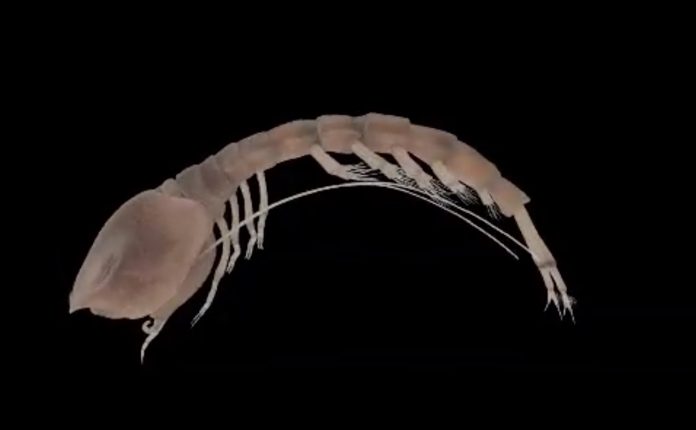An international team of paleontologists discovered the oldest known ancestor of the comma shrimp, a species that is still abundant today, in a cache of 90-million-year-old fossils in South America. The hundreds of exceptionally well-preserved specimens at the site allowed the researchers to create this 3-D reconstruction of what the ancient shrimp might have looked like while alive.
“Comma shrimp are small, delicate crustaceans with one of the poorest fossil records among marine arthropods—which is shocking as they are abundant today and live in soft sediments with good fossilization potential,” said the study’s lead author, Javier Luque, who conducted the research as a PhD candidate at the University of Alberta with colleagues from Yale University and the Smithsonian Tropical Research Institute.
The excellent condition of the shrimp fossils—named for their resemblance to the punctuation mark—allowed paleontologists to discern eyes, antennae, mouth parts and even fine hairs, and create a 3-D reconstruction of what the creatures might have looked like while alive.
“These fossils are of hundreds of adult males—which likely died suddenly in the water column while swarming during mating, falling slowly through the water with little or no damage,” said Sarah Gerken, co-author and professor at the University of Alaska Anchorage. “This left them in truly stunning condition.”
The scarcity of the fossils is partly due to where they lived—a shallow inner sea that ran through what is now the uplifted Andes mountains.
“Exceptionally preserved fossils provide a crucial glimpse into the Earth’s past,” explained Luque, who is now a post-doctoral associate at Yale. “Deposits like this are widely known from mid-to-high latitudes, but very few from modern tropical latitudes. This new fossil assemblage is the first of its kind in northern South America, and we hope it will become a reference for tropical paleontology in the region.”
The find follows on the heels of Luque’s discovery earlier this year of a “chimera” or “platypus crab” incorporating the features of many different marine arthropods.
“Both of these species are the first of a trove of fossils we are still exploring to understand the species preserved here and the processes that allowed their fossilization,” said Luque.
“It will give us a closer glimpse into the tropics’ past, and we hope our discoveries will open new avenues for the study of exceptional preservation in past and present tropical settings.”















